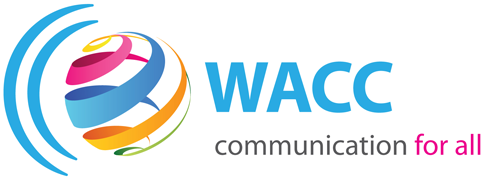13 Aug 2025 Indigenous Peoples and the Media
UNESCO
“In a world increasingly influenced by media narratives, the representation of Indigenous Peoples in the media has far-reaching implications for their rights, cultural and linguistic preservation, economic empowerment, well-being and inclusion in society,” states the introduction to a new publication from UNESCO. Based on extensive research, it concludes with 12 key recommendations for future action.
1. Ensuring rights, freedom of expression and access to media
Indigenous Peoples have the right to establish their own media and access non-Indigenous media platforms – radio, television, print and digital – without discrimination. Yet, this right is not fully realized, threatening pluralism, diversity, reconciliation and peaceful co-existence. Ensuring freedom of expression and access to information and media development is essential for well-being, education and full participation of Indigenous Peoples in society. All parties – duty bearers, rights enablers and rights holders – shall ensure compliance with UNDRIP Article 16 to uphold human rights and accountability.
2. Advancing media research and policy development
Media research generates essential knowledge for informed policy, decision-making and innovation. It should be evidence-based, grounded in a human rights-based approach and gender equality principles, and include Indigenous perspectives. Ethical, respectful and meaningful research practices, including Indigenous data sovereignty, intersectional gender analysis and disaggregated data, are crucial for effective data collection, planning and monitoring.
3. Strengthening legal and institutional frameworks
There is an urgent need to revise or develop new media laws and policies to support both Indigenous and non-Indigenous media. Equitable allocation of broadcast spectrum for Indigenous media, especially community radio, shall be mandated and supported by national legislation. The participation of Indigenous media professionals in policy and decision-making processes is imperative. Some countries provide legal frameworks for Indigenous media, yet global disparities remain significant and should be urgently addressed.
4. Promoting equitable editorial policies
Adopting equitable editorial policies ensures that Indigenous and non-Indigenous media serve diverse, often underrepresented audiences. Indigenous Peoples remain underrepresented in non- Indigenous media organizations and decision-making bodies, leading to marginalization and stereotyping. Ensuring independent and impartial Indigenous media and preventing interference – including from tribal councils – upholds freedom of expression and access to reliable information and media.
5. Ensuring fair representation in media content
A balanced portrayal of Indigenous Peoples in media shall be underpinned by a human rights-based and gender equality framework. Recognizing Indigenous Peoples as information sources fosters their accountability in the media. Editorial independence shall be strengthened to prevent harmful stereotypes and unfair representation in content, as well as the illicit trafficking of Indigenous cultural goods.
6. Improving working conditions for Indigenous media professionals
Indigenous media professionals, particularly women, shall have access to employment in the media industry under fair and non-discriminatory working conditions. All media professionals shall be ensured safety and non-violence, as well as equal access to management positions, training, capacity-building programmes, and career advancement opportunities. Non-Indigenous media professionals reporting on Indigenous affairs shall also be protected from threats and persecution.
7. Overcoming financial and structural constraints
Indigenous media organizations face challenges including limited human resources, infrastructure and technical support. High licensing fees, insufficient public funding and restrictive advertising regulations hinder their operational sustainability. In accordance with the UNDRIP, governments shall take measures to ensure that state-owned media adequately reflect Indigenous cultural diversity.
8. Addressing digital challenges and opportunities
Digital platforms and AI-based tools present both opportunities and challenges. While digital tools enhance audience engagement, their adoption is hindered by limited internet access, bias in AI based solutions, underrepresentation of Indigenous languages online, gender-based violence and digital literacy gaps. Investing in infrastructure and developing guidelines and digital tools helps to bridge these gaps and support Indigenous media in the digital space.
9. Strengthening media as a platform for public discourse
Media foster public discourse and participation among Indigenous Peoples. Indigenous media serve as platforms for sharing experiences, mobilizing action and shaping narratives. Ensuring Indigenous Peoples’ participation in non-Indigenous media programming and content production contribute to inclusive dialogue in society.
10. Promoting Indigenous languages in media
Language profoundly shapes how information is perceived and conveyed. Ensuring access to media content in Indigenous languages is vital for cultural and linguistic preservation, education and broader social inclusion. Developing language tools and resources will strengthen Indigenous language use in media, education, science and technology. Public service and community media shall be supported in fulfilling this mandate.
11. Integrating gender, disability and youth approaches, and crisis preparedness in media
Intersectional approaches addressing gender equality, disability inclusion and youth participation in media shall be prioritized. Efforts should be taken to ensure inclusive coverage of all social groups, support Indigenous women in the media, promote safety of media professionals and address gender-based and disability-related discrimination in media. Developing content and programming relevant to young people would encourage their participation and public engagement. Furthermore, emergency and crisis preparedness for Indigenous media are also essential. Structural barriers shall be dismantled to enable Indigenous media to implement sustainable and impactful initiatives in these areas.
12. Strengthening partnerships and professional networks
New multistakeholder partnerships and professional associations are needed to enhance collaboration between Indigenous and non-Indigenous media. Ensuring that Indigenous media workers, particularly women, have meaningful participation in global journalism will legitimize their role in the media landscape. Knowledge transfer, ethical guidelines, mentorship programmes and advocacy networks should be promoted to support media sustainability and fair working conditions, especially for Indigenous women in the media industry.
Source: UNESCO.



Sorry, the comment form is closed at this time.